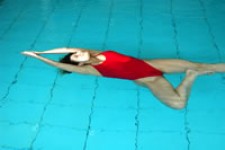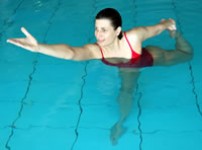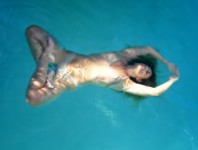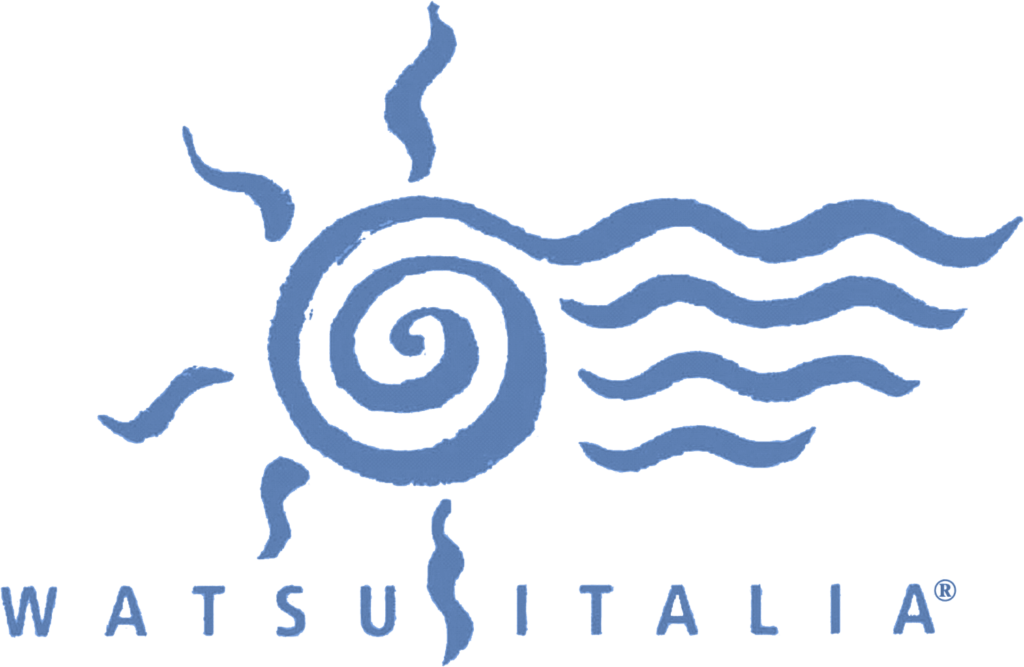Etymology: The term “WOGA®” is the union of the words “Water” and “Yoga”, Yoga literally means “to join”; the body and mind are the first elements that this discipline intends to integrate.
 Type of practice: There are four types of WOGA® practice: 1. static or moderately dynamic physical exercises (asana), which strengthen the entire body by increasing strength and elasticity of the entire muscular system; 2. breathing exercises (pranayama) to develop awareness and control of breathing; 3. concentration/focus and relaxation exercises to reduce stress. 4. Eutonia exercises in water, i.e. the refinement of the basic muscle tone of each muscle.
Type of practice: There are four types of WOGA® practice: 1. static or moderately dynamic physical exercises (asana), which strengthen the entire body by increasing strength and elasticity of the entire muscular system; 2. breathing exercises (pranayama) to develop awareness and control of breathing; 3. concentration/focus and relaxation exercises to reduce stress. 4. Eutonia exercises in water, i.e. the refinement of the basic muscle tone of each muscle.
Main benefit : the practice of aqua yoga (WOGA®), which combines the benefits of yoga with those of water activities, is divided into four main phases.
The first is stretching in water with consequent muscle lengthening and revitalization of the organism through the stretching of the energy meridians that run on the surface of the muscles.
This is followed by work on awareness of breathing, which allows you to increase the range of the respiratory act, thus promoting optimal gas exchange and an efficient immune system. In water, in fact, you learn to better manage respiratory flows (and apneas). Focuses, visualizations and concentration exercises allow you to calm the incessant work of the mind and can consequently cause states of deep relaxation.
gas exchange and an efficient immune system. In water, in fact, you learn to better manage respiratory flows (and apneas). Focuses, visualizations and concentration exercises allow you to calm the incessant work of the mind and can consequently cause states of deep relaxation.
Lastly, no less important is the work of muscle harmonization that gives joint (as well as muscular) looseness linked to breathing. But not only that, WOGA® movements and postures allow you to correct muscle imbalances and improve the dosage of strength in the use of muscles.
Mechanisms of action : the body and the mind are related to each other, so much so that acting on the mind modifies the body (for example, emotions can influence the immune system) and vice versa: that is, acting on the body can modify the mind (relaxing certain muscles reduces stress and anxiety).
 Differences with other possible existing disciplines: compared to traditional yoga – WOGA® – being practiced in water at a recommended temperature of 33°-35° – and being the water element a very powerful energy container it favors a surprisingly effective static and dynamic meditation. Furthermore, in the water, the heat, the massage of the water and the well-being that favor the dissolution of any type of tension, the relaxation of the spine and a better awareness of oneself. These movements on the ground therefore require a greater difficulty of posture.
Differences with other possible existing disciplines: compared to traditional yoga – WOGA® – being practiced in water at a recommended temperature of 33°-35° – and being the water element a very powerful energy container it favors a surprisingly effective static and dynamic meditation. Furthermore, in the water, the heat, the massage of the water and the well-being that favor the dissolution of any type of tension, the relaxation of the spine and a better awareness of oneself. These movements on the ground therefore require a greater difficulty of posture.
Origins and history:
Date and founder: 19.12.1987 Gianni De Stefani
Effects and Benefits: ALREADY SAID ABOVE
Who is it recommended for: WOGA® is recommended for everyone.
Who is it not recommended for: general contraindications to swimming pool water or thermal waters
Particularly effective if practiced together with: stretching and meditation
Recommended age:
Minimum age to start: 15 years
Age at which you can still practice: 80 years
Practice time to enjoy the benefits:
Minimum duration of a cycle: to obtain benefits, a cycle of at least 10 lessons is recommended.
Frequency: weekly attendance of a 60-minute WOGA® course.
How a meeting takes place:
Individual or in a group: the WOGA® course is carried out with a group of people.
Characteristics of the space where the meeting takes place: it is practiced in hot water at a temperature of about 33.5-35°
Phases of the meeting: a pre-interview with the teacher must take place only in the case of serious problems (e.g.: femoral prosthesis – diabetes – significant intake of medication, etc.)
What you need to practice:
To practice WOGA®, all you need is a normal swimsuit and, where required, a swimming cap.
Training requirements for a good teacher or professional:
ITC WOGA® training course by Watsu Italia and WABA (Worldwide Aquatic Bodywork Association)
How to choose the right teacher or professional for you:
On the website www.woga.pro
Recognized trade associations:
swimsports.ch
Important people who practice or have practiced the discipline:
Harold Dull, founder of Watsu®
Spread of the discipline and trends in Italy and in the world:
interest increasing all over the world
Recommended books to learn more:
– Watsu, freeing the body in water by Harold Dull
– Visualization and movement by Eric Franklin
– Matsyoga: yoga in water by Stefania Montagna
– Kundalini yoga, the awakening of vital energy by Lothar-Rüdiger Lütge
– Self-Shiatsu, how to do shiatsu yourself by Gioachino Allasia
– Atlas of Human Anatomy by Angelo Farina
– Theory and practice of Yoga by BKS Iyengar
– Theory and practice of pranayama, the art of yoga breathing by BKS Iyengar
– Eutonia by Mariann Kjellrup
– WOGA® and AICHI, by Gianni De Stefani, Italo Bertolasi and Roberto Fraioli
Recommended Video Courses:
WOGA®, RED editions, 2009
Recommended sites:
www.woga.pro , www.watsu.de , www.watsu.in , www.ecolewatsu.fr , www.wasserzentrum.ch
Recommended music for best practice:
Karunesh, Kitaro, Deva Premal, gentle classical
Presentation Author
Gianni De Stefani, 11.03.14
